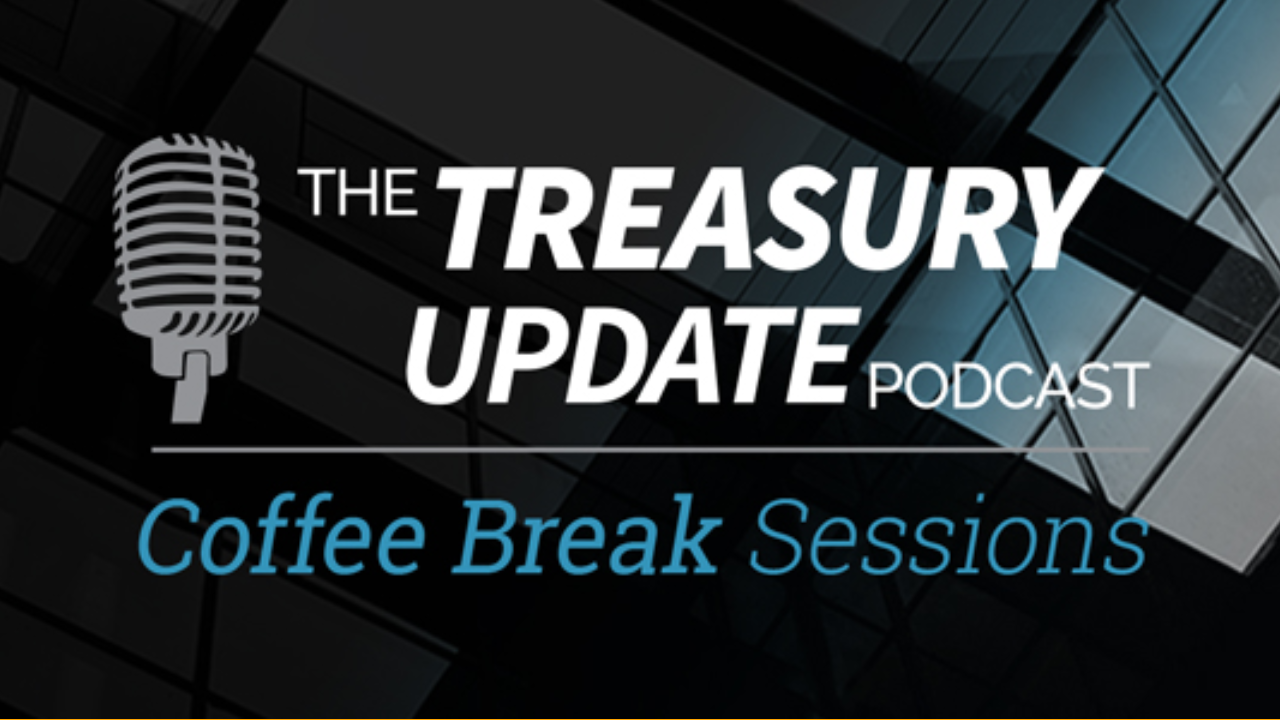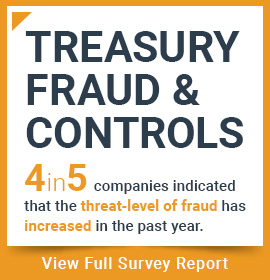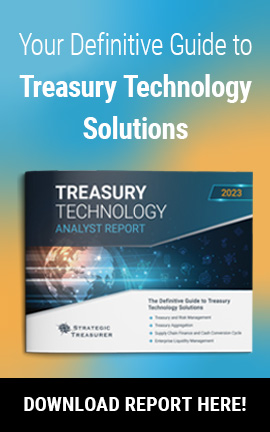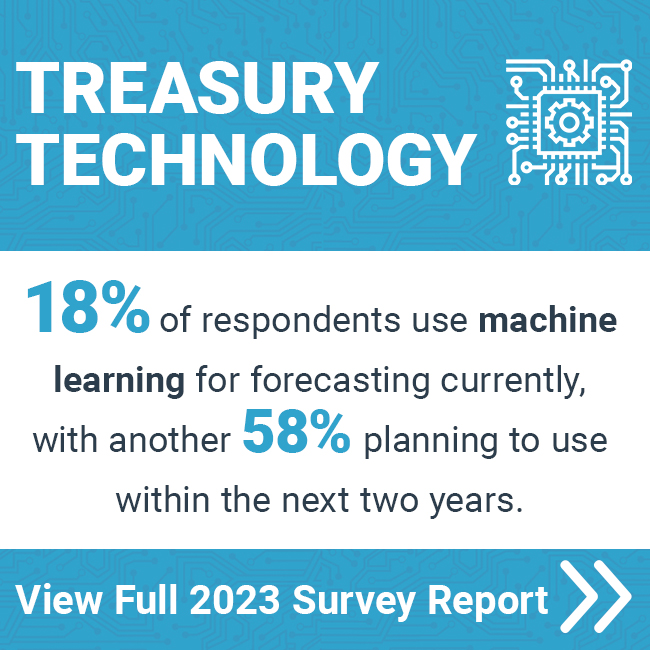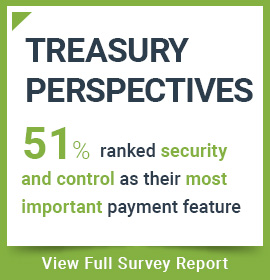
Session 21
What Are Global and Emerging Payment Types?
What are global and emerging payment types? Coffee Break Session Host Alexa Cook sits down with Stephanie Villatoro, Senior Consultant at Strategic Treasurer, to discuss both of these types of payments. They dive into some of the common payment types being used around the globe, new emerging payment methods and some pitfalls to watch out for. Listen in and learn a little bit about global and emerging payment types.
Host:
Alexa Cook, Strategic Treasurer


Speaker:
Stephanie Villatoro, Strategic Treasurer


Episode Transcription - CBS Episode 21: What are Global and Emerging Payment Types?
Alexa:
I am your host Alexa, and I’m joined today with Stephanie Villatoro, consultant at Strategic Treasurer. Welcome back, Stephanie.
Stephanie Villatoro:
Thank you, Alexa.
Alexa:
Yeah. Thanks for being here today. In the past few podcasts I’ve done with Stephanie, we’ve looked at typical payments and emerging payments. Today, we’re going to continue on our payments trend, and we’re going to look at some of the global or emerging payments, and then just a couple of pitfalls to look out for along with those. To kick it off, Stephanie, what are some of the top global payment methods or types?
Stephanie Villatoro:
I know we talked before about US payment types, and the standard payment types that we have, which included check, wire transfers, as well as some ACH. We’re going to talk about those in relation to global payment types, as well. With wires, you have your wire transfers, your cross border payments, but one of the ones that it’s more prevalent internationally than it is in the US, even though we are beginning that process in the US as well, are faster payments. This is very similar to a wire transfer, but it is secure. It is in its essence, faster as well. The cost of faster payments is typically less than a wire transfer. With a wire transfer you’re doing your bank to bank, giving them the instructions, with faster payments it’s a combo between what an ACH network would be and a wire transfer would be, where it’s using an outside network to transfer those payments between banks that are part of the network. That makes that more economically prudent for corporations. That’s your wire transfers.
Stephanie Villatoro:
Cross borders are still going to be across border payment between countries. One of the things we see where countries have come together to create a network like faster payments is the SEPA network where you can do cross border payments for the same currency, and Euros across borders more economically, as well. Then moving into ACHs here, that’s the ACH network in the US is through NACHA, where you can do bulk payments, and a lot of them, for your payables or your payroll. That’s also around the world, as well, but they have their own networks. This is BACS in the UK, NEFT and India, and then in Japan you have Zengin, as well. They’re just called something different in each country, some have similar names, but it’s a network within the country, a payment network, where you can do those bulk payments, as well.
Stephanie Villatoro:
Direct debit is something we have in the US but it’s not utilized a lot where we allow other companies to debit our bank accounts. From a security standpoint, we don’t like that. Internationally, this is utilized more, both on the business side, as well as personally. A direct debit is just allowing, let’s say a utility, your power company, to debit your account whenever you’re invoiced. That fluid motion of the payment process and the invoicing process isn’t one full swoop from the company that’s collecting. We see that a lot, direct debits from an international standpoint for recurring payments like rents or utilities, and maybe even taxes. And then cards. Cards are still a very prominent method of payment, both on the P2P side, which is personal to person, or person to business, as well as on the business to business side. That’s your main networks like your Visa, MasterCard, and Amex. There’s a few others out there, the JCB card, that’s Japan based. And the Maestro card, which is a debit or a prepaid card type that is used, as well internationally. That could be used in the US, but we see it more overseas. I’ll move into emerging payments if you’re ready for that, unless you have any questions.
Alexa:
No, I was going to just ask if we could go through what some of those emerging payment types were. Go ahead.
Stephanie Villatoro:
Great. I’m going to talk about some payment services, as well as payment types. There’s payments services internationally. These are companies like Payoneer, transfer wise, that are out there. Payoneer is one of the well known ones, they’re based out of the US, but used internationally. This is just virtual bank accounts that they create with their clients, where they can manage invoicing and billing, and do the payment for them. Allows them to make many types of payments from a multicurrency standpoint for just say percentage fee on each of the transactions. That’s their base model. Then, we also have a company in the US called Dwolla, that’s going international. I think they’re either in Australia, or they’re going into Australia, which is Dwolla. They utilize something similar to an ACH network, as well, to make payments on behalf of their clients to and from other businesses, or even person to business. Where if you submit a payment through a Duala app, as a person to an organization, they put that through their network of banking partners to transact that business since it’s cheaper, even than an ACH. We’re going to see that grow into the international market, as well.
Stephanie Villatoro:
Then, there’s digital wallets. The typical PayPal, Venmo, Apple, and Google wallets, those are being used more and more from the P2B, so person to business, for different types of payments, whether you’re going through a drive through. Especially, today with COVID, people are not wanting to hand them their cards over anymore, or they don’t want to accept cash. You see more of those non-touch types of payments going on. One thing that I’ve seen that’s coming into fruition is using those payment wallets for in car payments. We’re seeing smart cars now, are cars with the ability to make payments through drive-throughs, or for a toll, and even with gas and parking, it has some geo-fencing with your car to be able to find the gas station, and then pay for the payment, pay for the fuel that you’re purchasing, as well with finding parking spaces that are available and paying for the parking without having to go to the meter, or have an app on your phone to do it. That’s going to streamline a lot of things, as well, if people decide to use that. Of course, there’s security and things to be involved with that, of how those payments are made, and it will be through different things of geo-fencing or an API, or even Bluetooth.
Stephanie Villatoro:
On the last one that I’ve seen more recently coming into play, and this has some pitfalls. I know you’re going to ask me about, as well, are mobile accounts from a corporate standpoint, to be able to make payments. They’re utilizing a mobile account with a mobile provider, a Verizon, or a T-Mobile. They have an account with them, which isn’t a formal bank account, but it’s an account that can take funds and hold funds for payments via a text through a phone number. We can accept it, I’ve seen it used for payroll, for example.
Alexa:
Okay. That’s super interesting about the cars and how the shift to those emerging payments is really happening, especially with all the impacts from COVID. Then you led into it. What are some of those things to look out for when starting these different payments, or even what are some of those pitfalls?
Stephanie Villatoro:
With the mobile account, one of the things that, this came up recently with a client of mine, that they weren’t aware of the mobile accounts in another country, and it was in Africa, they were utilizing that to pay employee payroll. This was something that corporate wasn’t aware of, but this is considered an international account and has to be reported for regulatory purposes with FATCA. That’s one of the things, making sure your policy includes these types of accounts, so that if they are utilized locally, you’re aware of it from a corporate standpoint and you’re meeting your regulatory requirements. That’s one of them. I see this with mobile accounts, broker accounts, just different types of financial accounts. You have to look at the definition from the different regulatory bodies. The other pitfalls I see is more if you were going into a new country, so you’ve either acquired or you are starting up in a new country, knowing what the regulations are for payments in that country, what are the payment types that you can utilize, and also how you transfer funds, cross border. This might be for repatriation, as well. What are the rules and regs about that. Those are some, some things that I see when you’re, going into a new country.
Stephanie Villatoro:
The other is just, ever-changing documentation requirements. Some countries have a set of documents that don’t change frequently. I know China’s usually the bad guy about having to have a lot of documentation when you’re transferring funds cross border, but it doesn’t change very often. They get a bad rep, but in reality, once you have the documentation they change very infrequently. Then there are other countries that change almost daily, and you literally have to contact your bank on a regular basis anytime you’re going to move funds. Hopefully, those things don’t change before you actually do the payment. That becomes more of a pain point in different countries.
Alexa:
I’m just going to do a quick recap on everything that we’ve covered today. I think global payments, in general, are just plainly put. Payments that are moving around the globe, that can include wires or ACHs, or low value payments, which are I think you gave me a couple of examples of what those could be. That could be NEFT or Zengin, I might not be saying that correctly, direct debit or even card payments. Then, when we shift down into the emerging payment types and services, that could include virtual banking, which is I guess provided by providers such as Payoneer or Dwolla, I think was another one that you said. Another example would be the digital wallets. That, I think, is really starting to grow in popularity with a lot of like the no touch types of payments, again, bubbling up through this COVID that we’re all working through. Then some of those pitfalls would be differences across borders for the regulatory purposes. Like you said, it might be required by FATCA, but it might not even be on the radar that that would be an account that should be counted as a part of FATCA reporting. Then just different changes across the globe for documentations and things of that nature. Was there anything else that you wanted to add there?
Stephanie Villatoro:
Just clarification on some of the payment types. Some of these are cross border payments, and some of them are local payments when you’re looking at your ACH or your direct debit. Those are typically in country. Your cross border or faster payments, those can be both internal. The faster payments can be both internal of the country, or external, so cross border. And then your cross border wires.
Alexa:
I should almost preface that and say that some of those top global payments might be top payment types used across the globe, not international payments, or cross border. That’s a good clarification, so thank you. Thanks for joining us, and to all of our listeners, make sure you tune in every first and third Thursday for a new episode of the Coffee Break Sessions. And as always, we love hearing your feedback, comments, questions, and concerns. You can send us an email podcastat@strategictreasure.com. Otherwise, enjoy the rest of your week. Thanks everyone. And thanks, Stephanie.
Related Resources
Want access to more great content? Subscribe to Strategic Treasurer on YouTube!
A part of the Treasury Update Podcast, Coffee Break Sessions are 6-12 minute bite-size episodes covering foundational topics and core treasury issues in about the same amount of time it takes you to drink your coffee. The show episodes are released every first and third Thursday of the month with Special Host and Treasury Consultant Alexa Cook of Strategic Treasurer.


